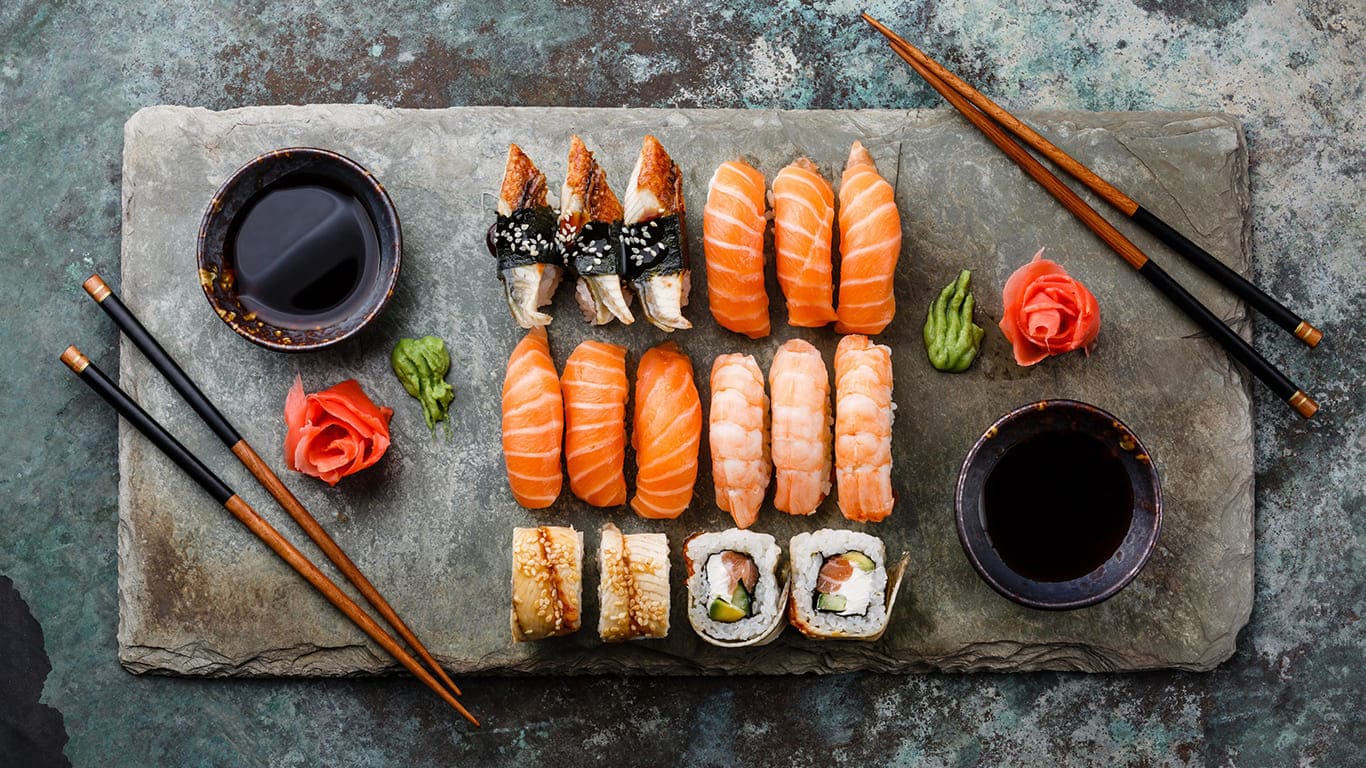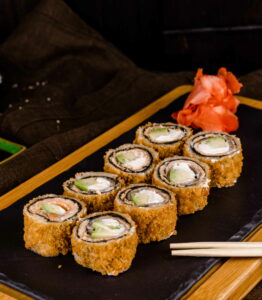Sushi, one of Japan’s most iconic culinary creations, has a rich history that spans centuries. Originating in the Edo period (1603-1868), sushi has evolved from a simple method of preserving fish to a sophisticated and globally beloved cuisine.
Edo Period: The Birth of Nigiri

During the Edo period, sushi began as a means of preserving fish by fermenting it with rice. This process, called narezushi, involved packing fish with rice and allowing it to ferment for several months. However, the more recognizable form of sushi, nigiri, emerged in this era. Nigiri sushi consists of a slice of fresh fish or seafood pressed onto a small mound of vinegared rice. This innovation, attributed to Hanaya Yohei, revolutionized sushi, making it a popular and convenient street food in Tokyo (then Edo).
Modernization and Global Influence

The modernization of Japan in the late 19th and early 20th centuries brought significant changes to sushi. Refrigeration technology allowed for the use of fresh, raw fish, leading to the development of sashimi and a greater emphasis on freshness and quality. The post-World War II era saw sushi spreading beyond Japan’s borders. The 1960s and 70s marked the beginning of sushi’s global journey, with the opening of sushi restaurants in the United States and Europe. Western adaptations, such as the California roll, which uses avocado and crab meat, further popularized sushi internationally.
Contemporary Sushi: Innovation and Tradition
Today, sushi continues to evolve, blending tradition with innovation. High-end sushi restaurants, or sushi-ya, focus on the purity of ingredients and masterful techniques, offering omakase experiences where chefs create personalized tasting menus. Meanwhile, conveyor belt sushi, or kaiten-zushi, offers a casual and affordable way to enjoy sushi, making it accessible to a broader audience.
Fusion sushi, incorporating ingredients and flavors from various cuisines, has also become popular. Sushi chefs experiment with unique combinations, such as spicy tuna rolls and tempura sushi, pushing the boundaries of traditional sushi while respecting its roots.
Sushi’s evolution reflects Japan’s dynamic culinary landscape, balancing respect for tradition with a passion for innovation. From its humble beginnings in the Edo period to its status as a global delicacy, sushi continues to captivate food lovers around the world with its delicate flavors and artistic presentation.
